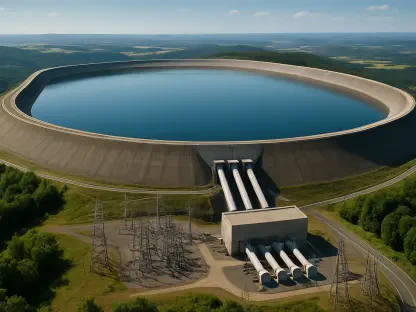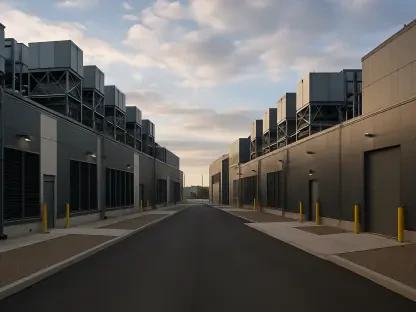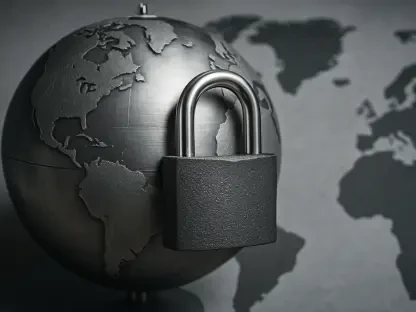In an era where electricity underpins nearly every facet of daily life, the American power grid has emerged as an indispensable element of modern society’s infrastructure. Acting almost like a nation’s nervous system, this grid ensures the continuous operation of both mundane and critical sectors, from household lighting to national economic activities. The notion of its vulnerability to deliberate attacks is gaining traction as a significant security concern. For instance, recent attacks have illustrated how critical failures in this system can spell chaos across different dimensions, from technological outages to interruptions in emergency services. As society increasingly relies on uninterrupted electricity flow, reinforcing the grid’s security represents a non-negotiable priority.
Understanding the Threat Landscape
A History of Vulnerabilities
The American power grid’s susceptibility to deliberate attacks became starkly evident with the incident at Metcalf Transmission Substation. This California-based facility came under siege in a well-coordinated maneuver, where attackers employed assault rifles to inflict substantial damage to its infrastructure. The ramifications extended far beyond immediate physical destruction, highlighting intrinsic weaknesses that could potentially cripple essential services. Experts have spent eighteen months dissecting this event to fully understand its implications, recognizing the potential for more such sophisticated strikes. Highlighting vulnerabilities has spurred discussions among national security agencies, urging a reevaluation of existing protective measures and emergency response protocols.
Perspectives on Security Challenges
The incident at Metcalf sparked a dialogue, drawing input from a diverse array of security experts, including former FBI agents and seasoned industry professionals. Their collective insights echo a growing consensus about the inherent risks posed to the power grid and its components. These discussions delve into potential threats, ranging from direct physical attacks to the intangible menace of an Electromagnetic Pulse (EMP). An EMP could incapacitate electronic equipment on a massive scale, presenting unique challenges in safeguarding infrastructure. Lawmakers and regulatory bodies are now more vigilant than ever, continually assessing the strength of existing security frameworks and seeking enhancements to defend against growing threats. This multifaceted problem necessitates expertise from various sectors, stimulating a collaborative effort to bolster defenses.
Bolstering Physical Security Measures
Enhancements at Ground Level
Following the Metcalf substation attack, Pacific Gas & Electric initiated a series of robust measures aimed at reinforcing the site’s physical security. This included the construction of opaque fencing, designed to shield vital components from line-of-sight attacks. The installation of sophisticated surveillance systems serves the dual purpose of deterring potential intruders and enabling real-time monitoring of the site’s activities. Enhanced lighting has been strategically deployed to ensure visibility during nighttime operations, further deterring illicit activity. These efforts underscore the company’s commitment to fortifying its infrastructure against potential breaches and illustrate a proactive stance toward mitigating physical security risks.
Proactive Monitoring Approaches
Beyond passive defense measures, entities responsible for grid security are exploring more dynamic, proactive approaches to monitoring and protection. Increased patrols form a visible deterrent, but the real innovation lies in employing sensors capable of detecting ground vibrations. This technology provides real-time alerts of suspicious activities around critical infrastructure, significantly reducing reaction time to potential threats. Coupled with state-of-the-art surveillance systems, these alerts can empower security personnel to respond swiftly and effectively. Together, these advancements symbolize a marked shift toward comprehensive, active defense measures, ensuring that the power grid remains resilient against a spectrum of physical threats.
Exploring Innovative Surveillance Solutions
The Future of Drones in Security
In the quest for innovative solutions, the integration of drones into security operations emerges as a promising prospect. With their ability to cover large areas swiftly, drones offer unparalleled surveillance capabilities. While deploying these unmanned aerial vehicles presents numerous advantages, challenges remain, primarily surrounding regulatory approvals. The Federal Aviation Administration continues to deliberate on guidelines governing drone usage within national airspace. Despite this, the push for incorporating drones in security operations grows, driven by their efficiency in detecting anomalies over sizable regions. As the adoption of drones progresses, security professionals remain optimistic about their transformative potential in grid surveillance.
Technological Advancements and Constraints
While technological leaps promise enhanced security, they also introduce unique constraints. Integrating advanced surveillance technology demands substantial investment, both in specific tools and skilled personnel. Operational burdens are heightened as new systems often require dedicated management and oversight. Moreover, regulatory barriers pose significant challenges, necessitating careful navigation to ensure compliance. These hurdles stand alongside technological limitations, such as optimization of real-time data processing and maintaining consistent performance under diverse weather conditions. Through ongoing research and development, industry leaders strive to reconcile these constraints, forging pathways toward a secure and resilient power grid.
Striving for Comprehensive Defense
Bridging Security Gaps
The focus on bridging security gaps emphasizes both the immediate and long-term imperatives in fortifying the power grid against multifaceted threats. Industry leaders are coordinating a comprehensive strategy, integrating physical security enhancements and cyber defenses to address vulnerabilities holistically. Avoiding fear-based narratives, these efforts underscore a steadfast dedication to pragmatically strengthening infrastructure. Moving beyond mere remedial measures, stakeholders are investing in robust risk assessments and advanced forecasting models. The objectives are clear: to ensure resilience amid ongoing threats and to safeguard a critical national asset upon which millions rely daily for seamless operations.
Balancing Security and Operational Efficiency
In today’s world, where electricity is vital to almost every aspect of daily living, the American power grid stands as a crucial component of society’s infrastructure. It functions much like a country’s nervous system, ensuring the smooth operation of everyday activities like household lighting, while supporting essential sectors such as national economic systems. The rising concern over its susceptibility to malicious attacks has become a pressing security issue. Recent incidents have highlighted how pivotal failures within the grid can lead to widespread disorder, impacting everything from technological services to disruptions in emergency response operations. As dependence on a constant electricity supply grows, strengthening the grid’s security has become a paramount priority. Ensuring the system’s resilience is crucial not only for maintaining routine functions but also for safeguarding national security and stability in a world where uninterrupted electricity flow is increasingly central to modern existence.









